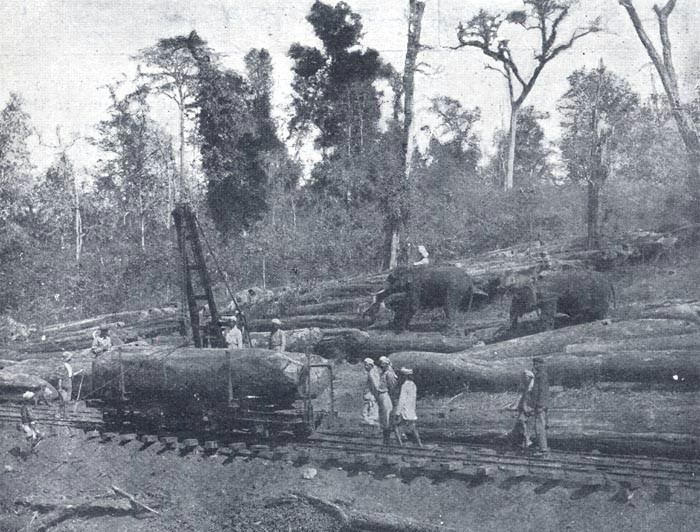Industry Railways Revenue Rs 17.5 lakhs | Services Light Rail transport Founded 1907 Defunct 1963 | |
 | ||
Area served Thrissur District and Palakkad District | ||
Cochin State Forest Tramway was a 1,000 mm (3 ft 3 3⁄8 in) metre gauge narrow gauge railway line and historical forest tramway running from the Parambikulam Wildlife Sanctuary in Palakkad District to Chalakudy in Thrissur District. Operating from 1907 to 1963, it served the State of Cochin and brought prosperity by bringing Teak and Rosewood from forests which were later shipped to different locations all around the globe.
Contents
Inception
The idea of forest tramway was put forward by J.C. Kolhoff, first Conservator of Forests, Cochin, and was implemented by a forest officer on special duty, V. Alwar Chetty. British officers Haldwell and Floukes did the initial survey and route. R.E. Haffield was the first tramway engineer who cleared the forests and laid the lines. It was during the rule of Rama Varma XV, Maharaja of Cochin (1895 to 1914), the tramway was built.Governor of Madras Sir Oliver Russell, 2nd Baron Ampthill, inaugurated the construction of tramway on 3 October 1905. Regular work in the tramway started in 1907. On June 26, 1907, the Maharaja of Cochin passed the Cochin Forest Tramway Act, which provided for protection and management of the tramway.
Tram routes
The total length of the tramway was divided into three sections. The first section started from Chalakudy and ends at Anapantham covering a length of 21 miles. The second section starts from Kavalai to Pothupara covering six miles, and the third starts from Komalapara to Chinnar, covering a distance of 22.5 miles. The total length of tramway is 49.5 miles (79.5 km).
.
Machinery
As it is the forest headquarters, Chalakudy used to house the tramway workshop and timber yard. The section had two locomotives that used to pull the trucks and saloons. The locomotives, rolling stock and machinery for the tramway were supplied by Orenstein and Koppel of Germany. P&W MacLennan of the U.K. supplied the bridges and culverts. K.R. Menon was the last tramway engineer. The tramway system had double lines and worked on rollers and cables. Empty wagons were rolled up while loaded wagons were pushed down along the other rails.
Demise
In 1926, the special finance committee recommended the abolition of the tramway but was rejected by the Government in 1928. Another special committee was set up in 1950 under the chairmanship of the Chief Conservator of Forests, which recommended discontinuing of the tramway. In 1953, another commission was appointed but given the report that tramway should be revived at any cost. Finally in 1963, after serving 56 years and making modern Cochin Port a present-day commercial harbour and Cochin City, the economic hub, the Cochin State Forest Tramway was abolished on the basis of a special finance committee report. The staff was absorbed in various departments of Government.
Legacy
The tramway was an engineering wonder in that period for South India. The money was used for building ports, bridges, roads, colleges, schools etc. Cochin Port, a major port on the Arabian Sea – Indian Ocean sea-route was constructed by the earnings from the tramway. Wellington Island, which was created during construction of Cochin Port, was also bankrolled by tramway revenues.
